Abstract
Of the two proved Simulium vectors of onchocerciasis in Africa, the more widespread and the easier to identify is S. damnosum. The identity of S. neavei is less easily established, and a summary of the present position regarding the S. neavei complex is given. The bionomics of the immature stages and adult females of S. damnosum and S. neavei are discussed in detail, and consideration is also given to the relation of each species to disease. Distribution maps are included.
Full text
PDF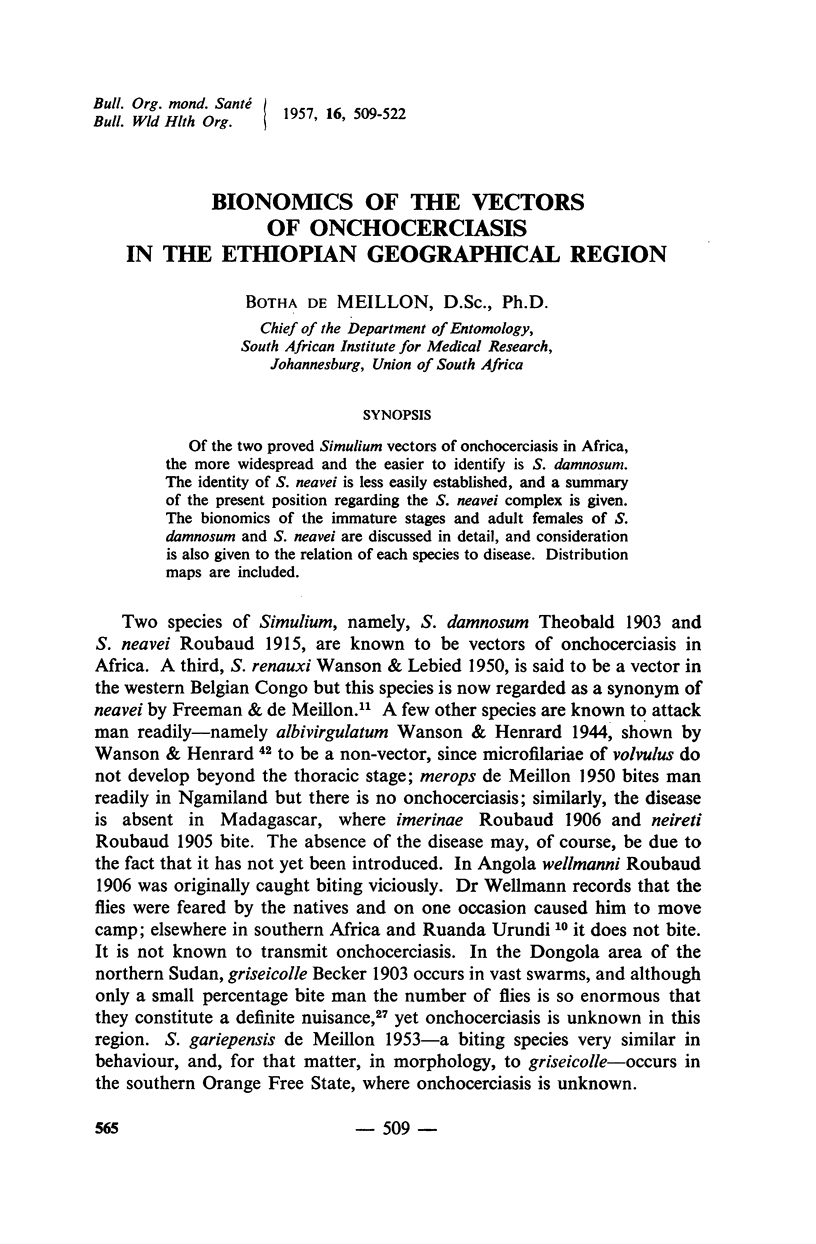
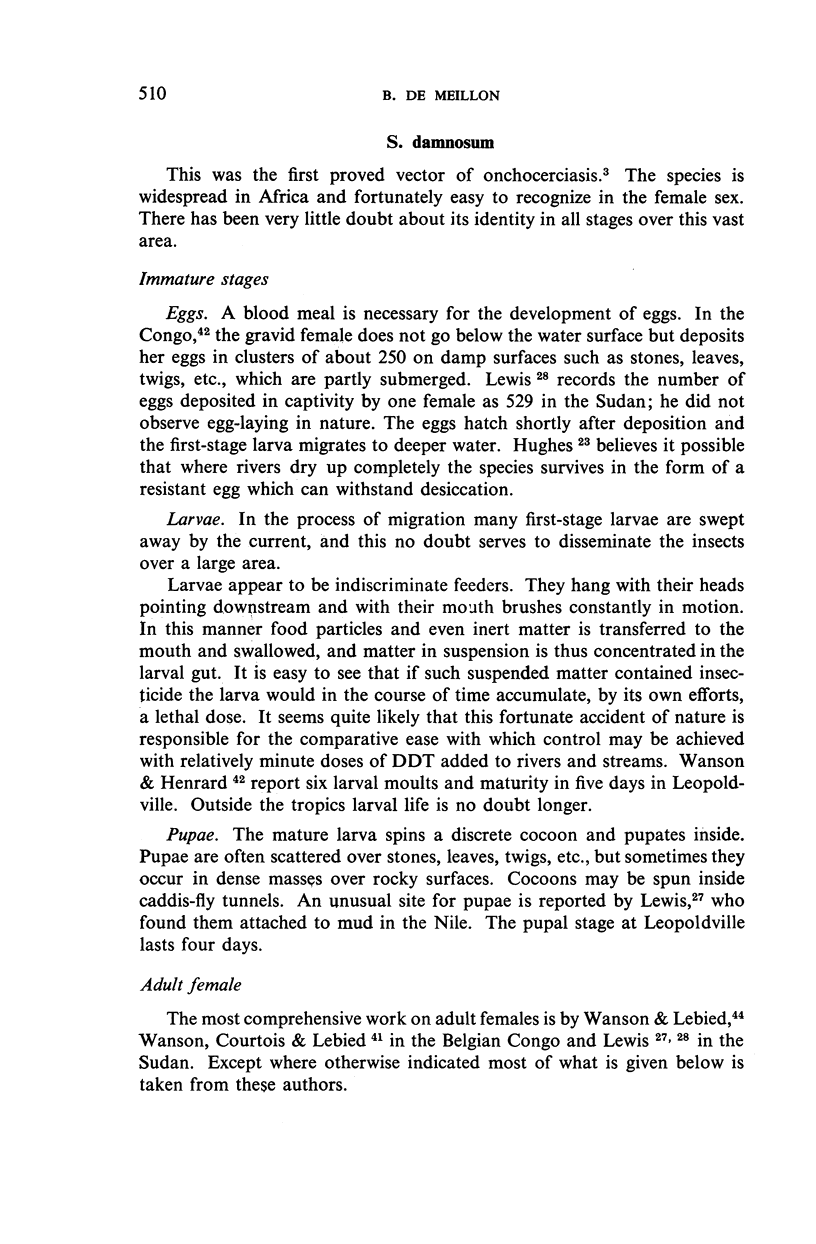
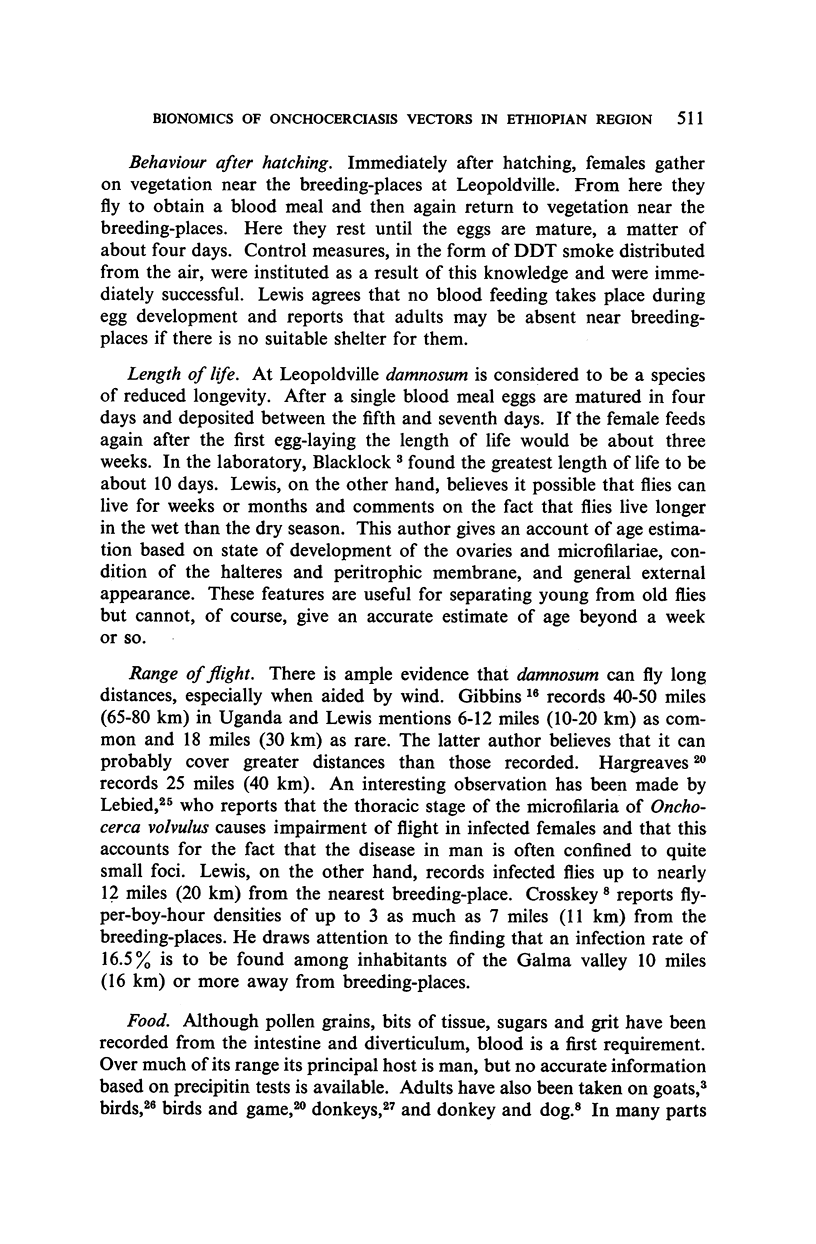
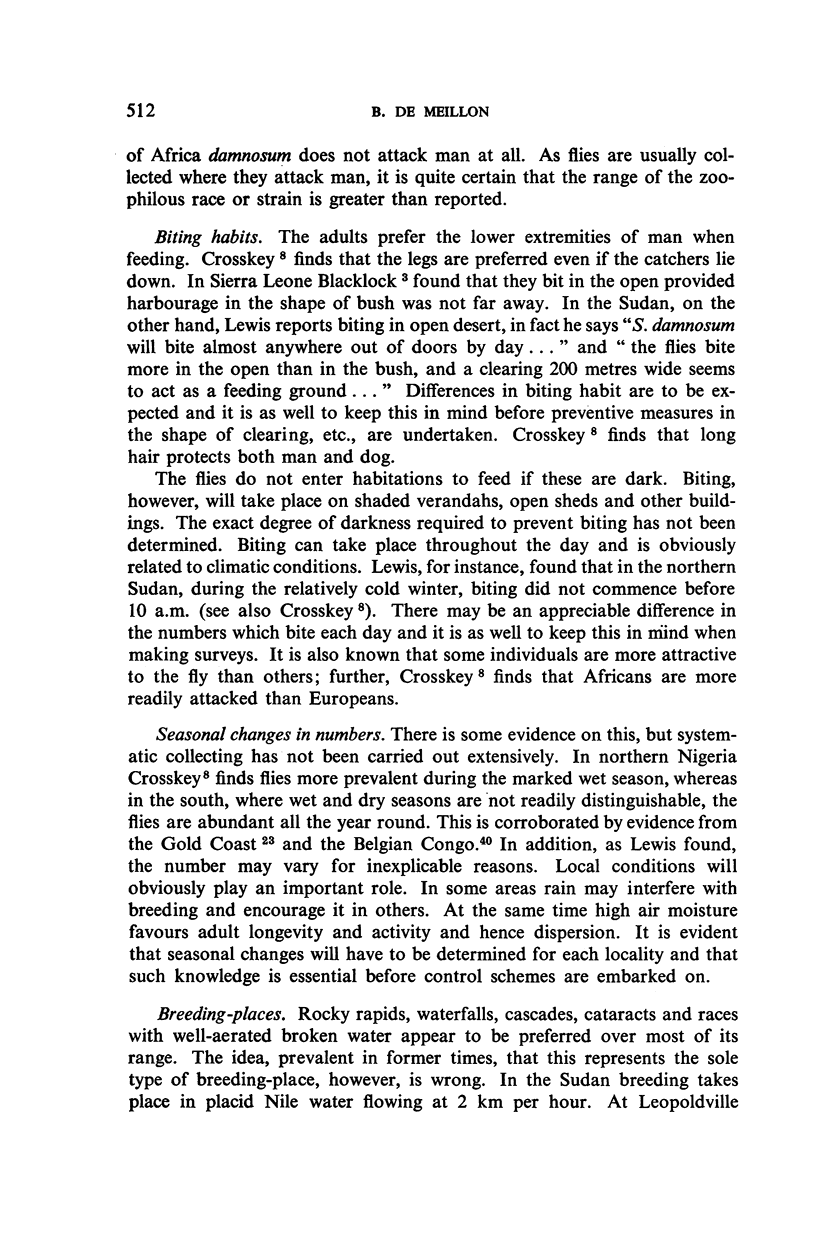
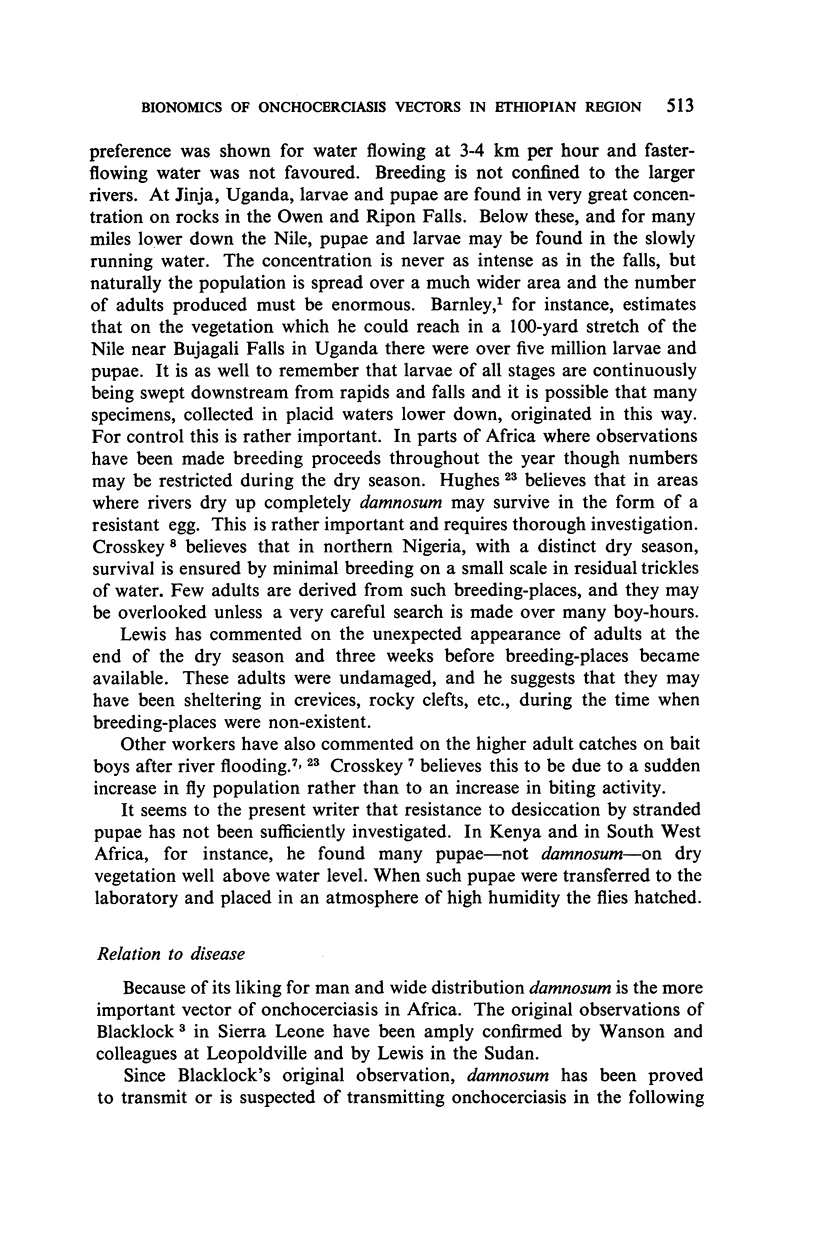
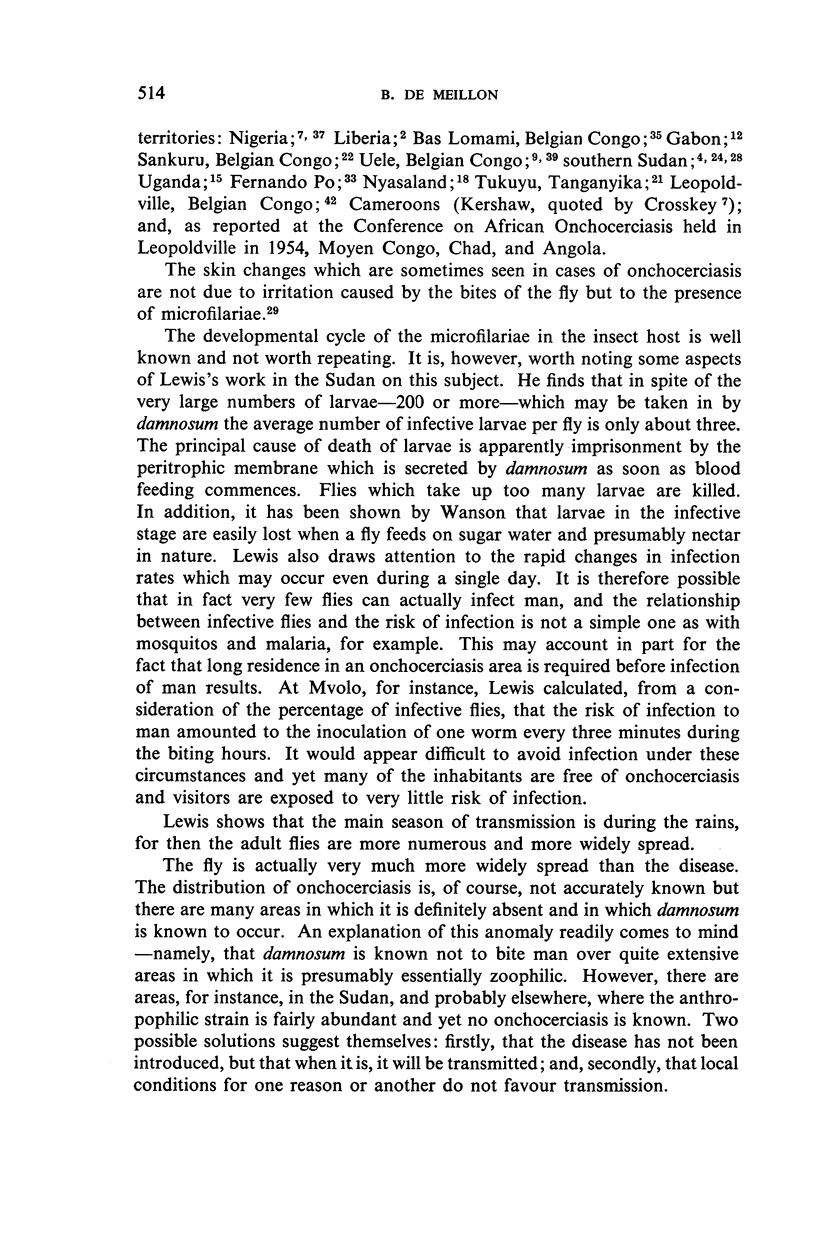
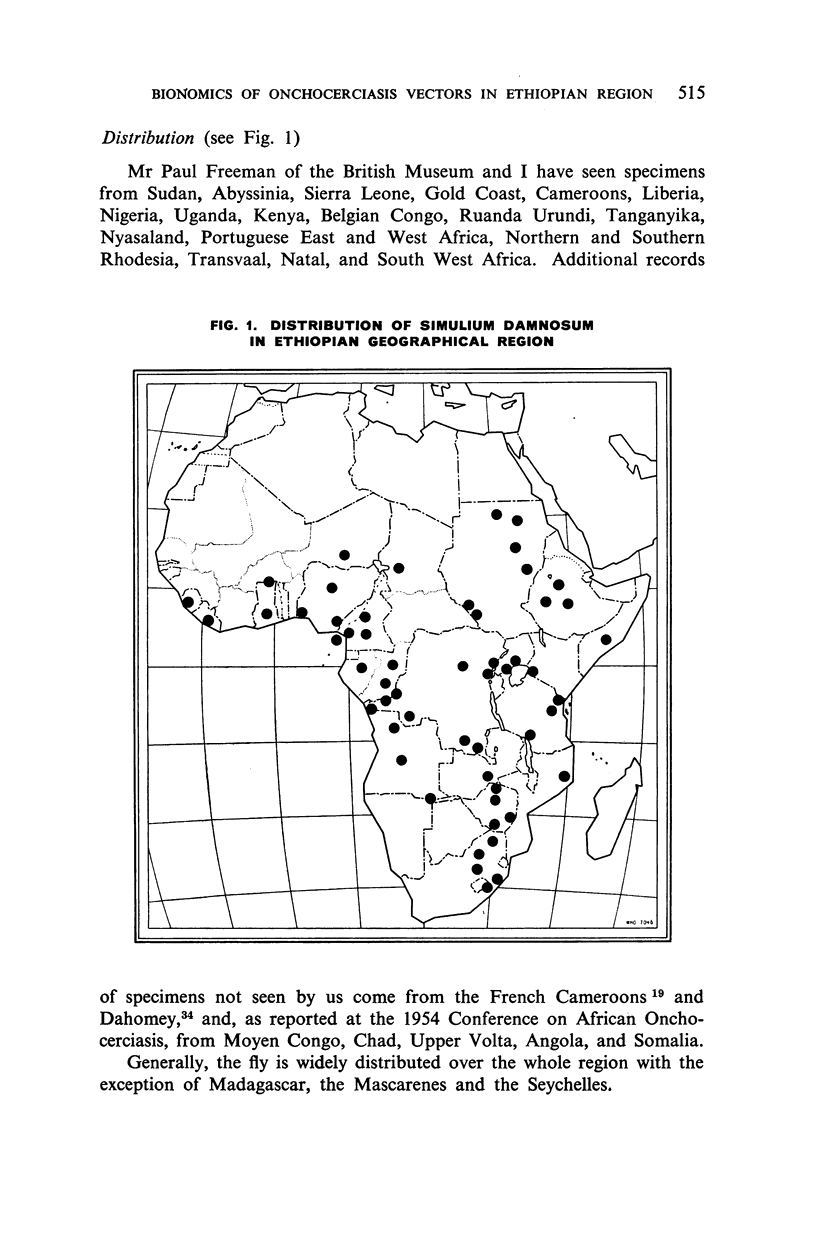
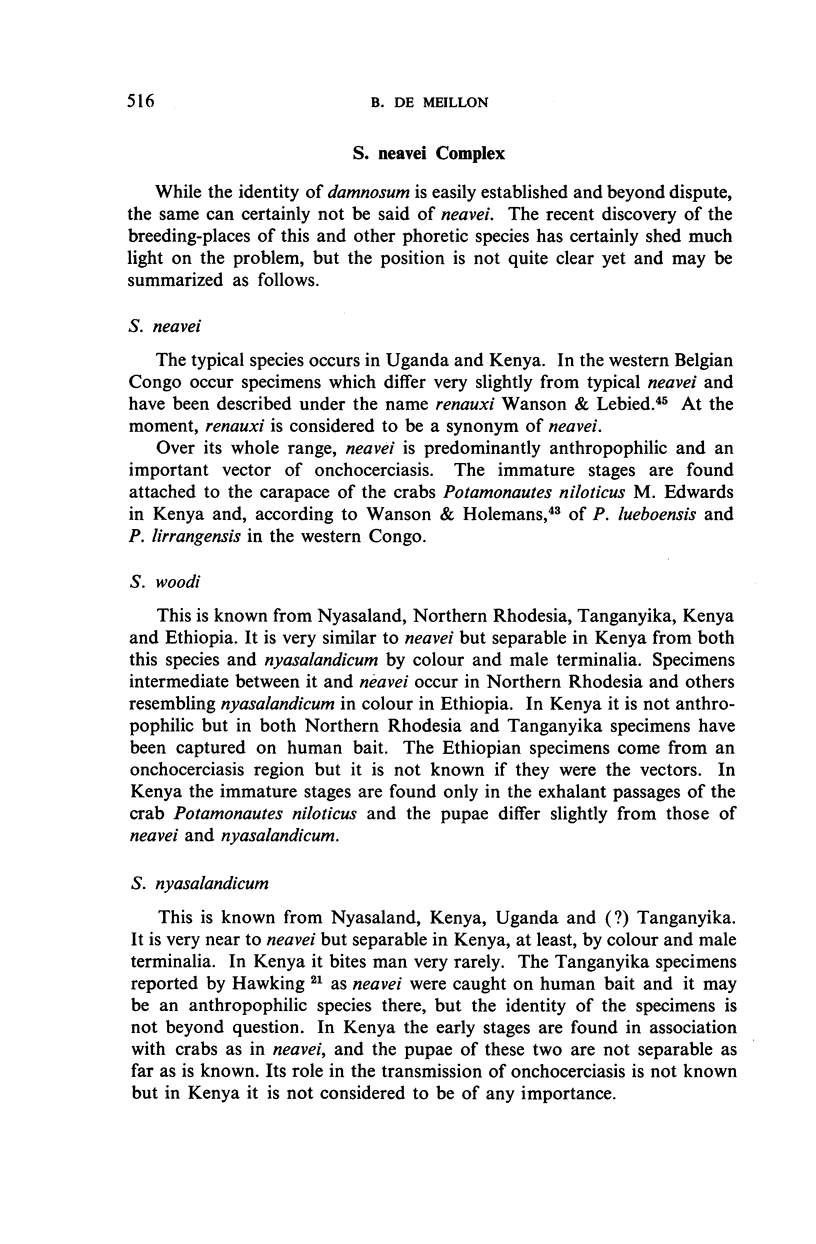
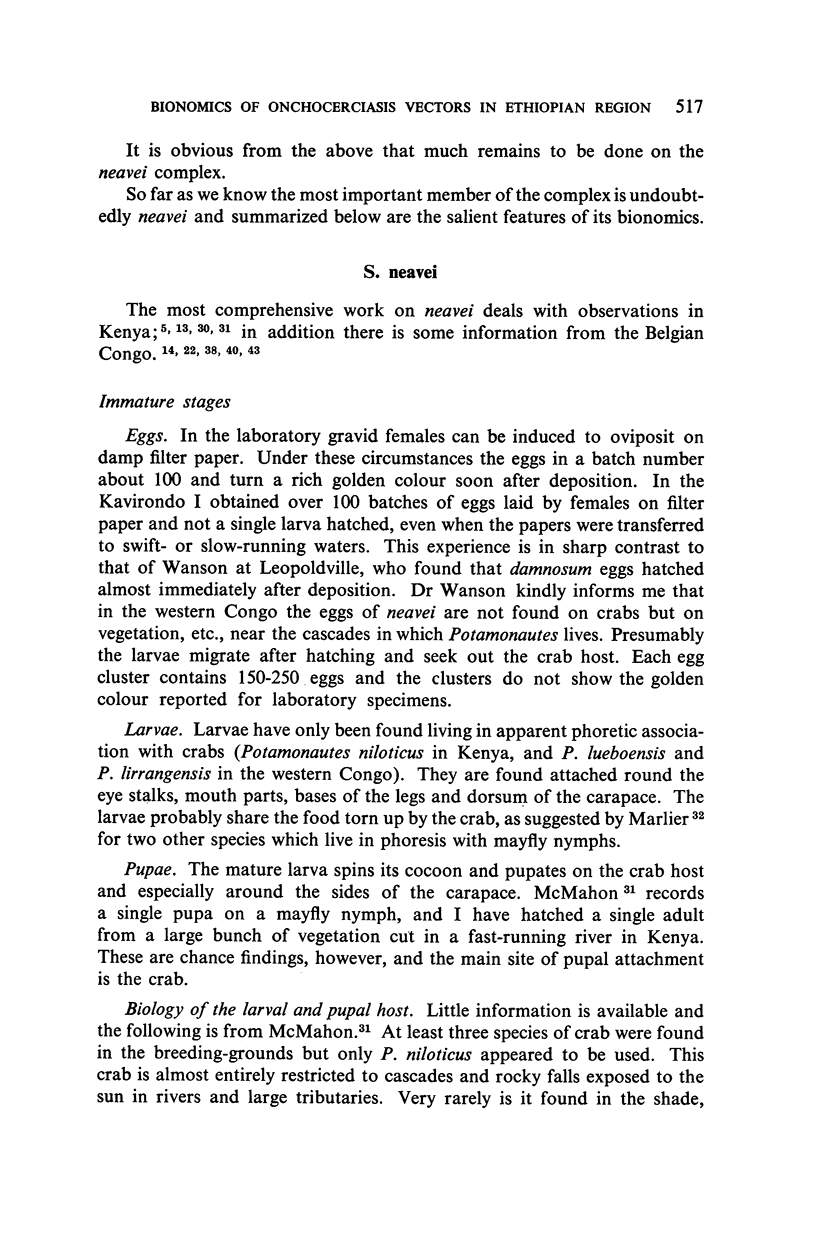
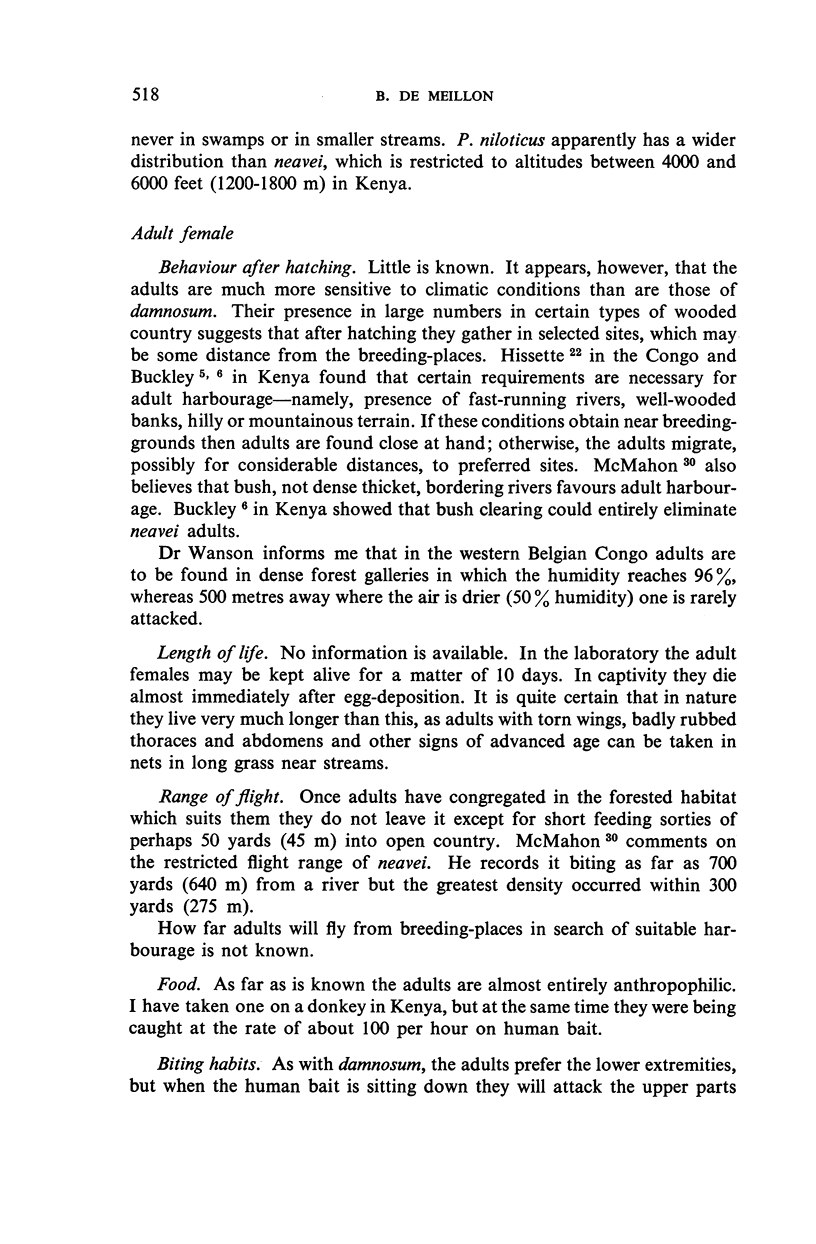
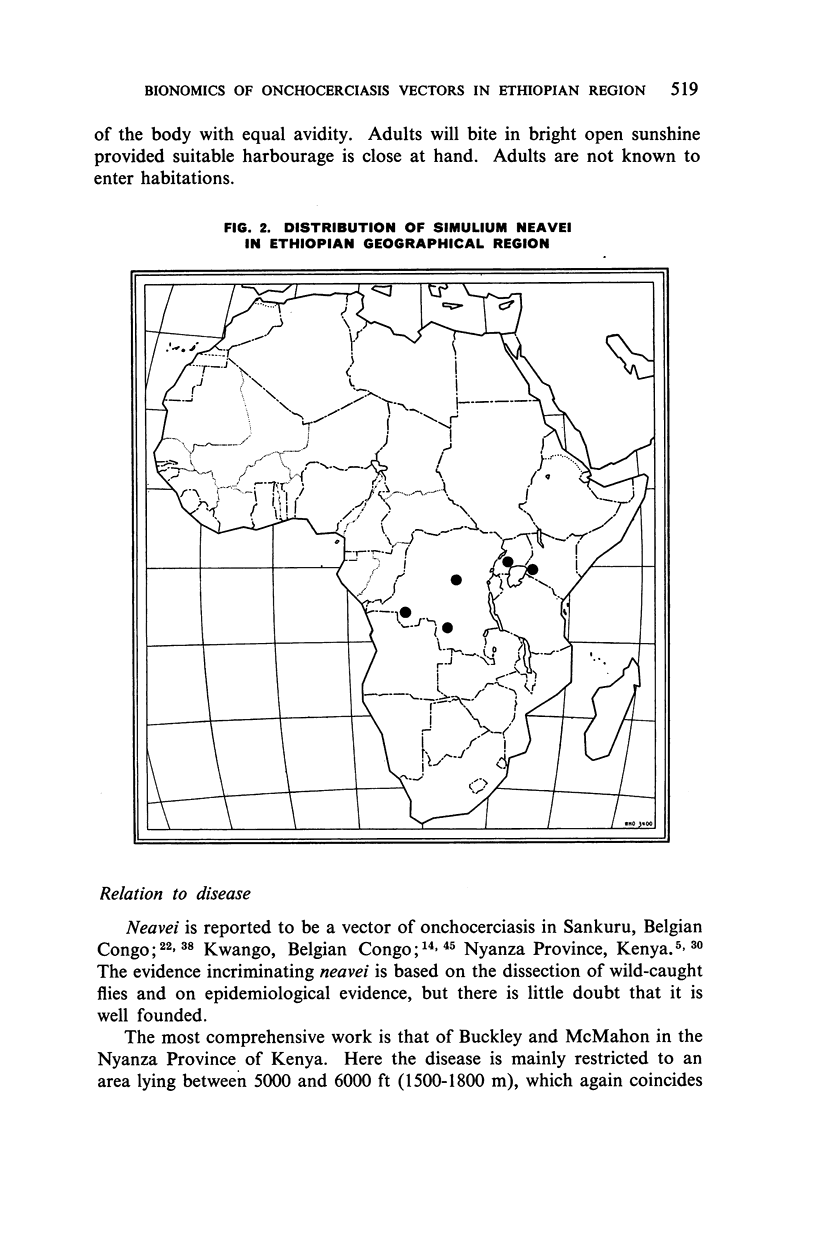
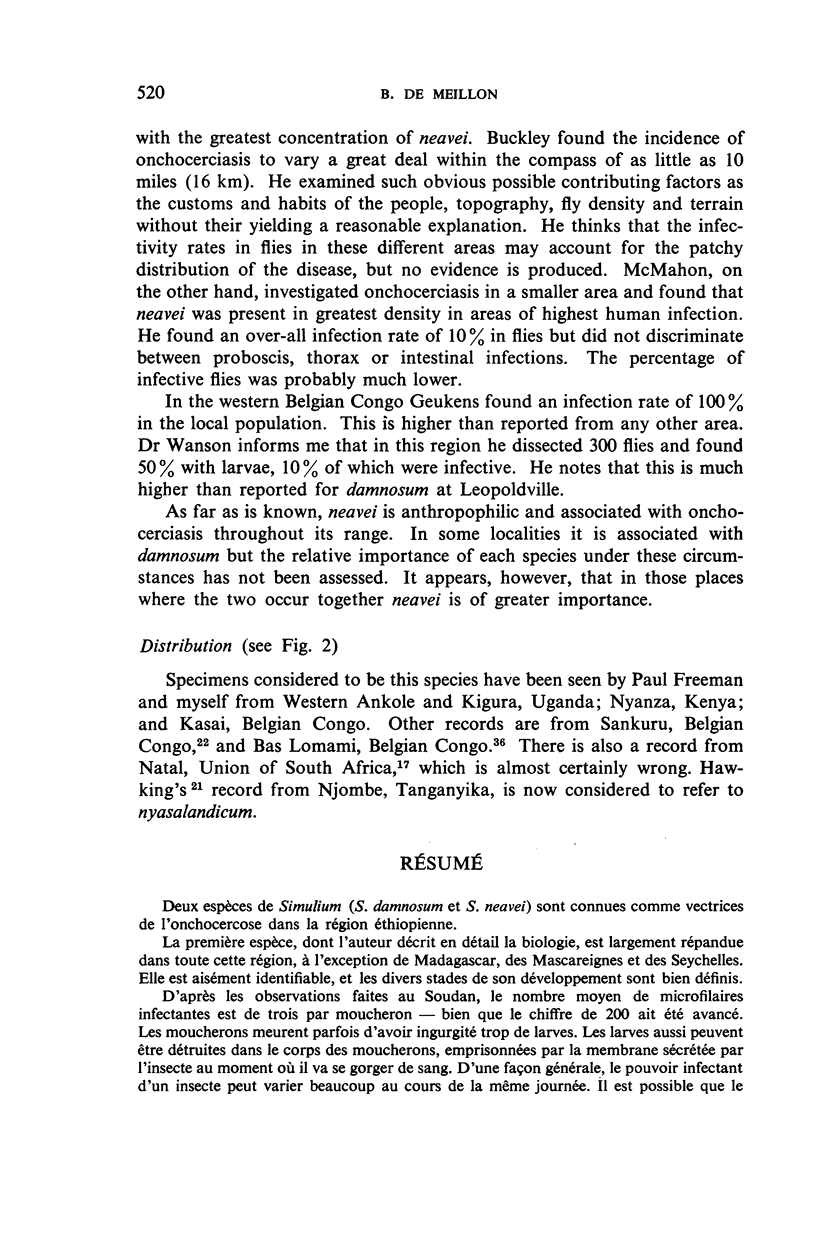

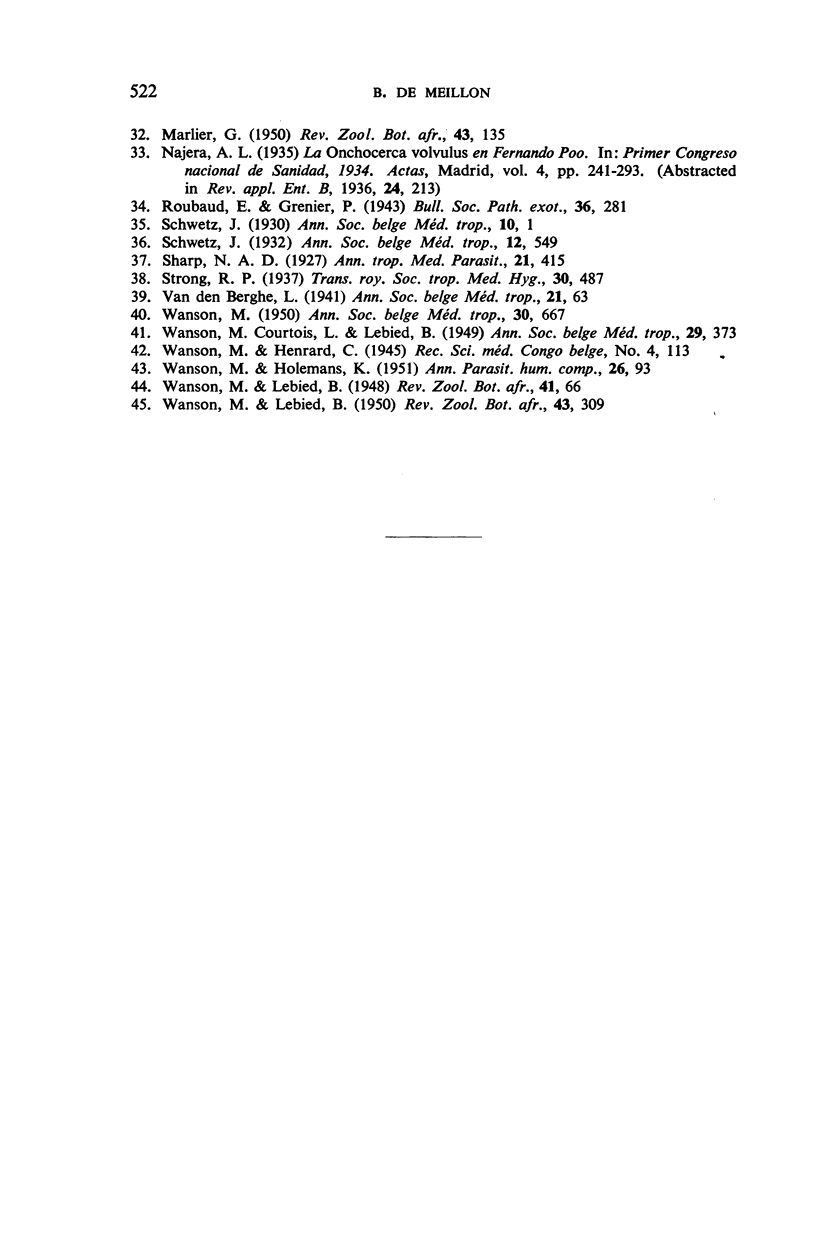
Selected References
These references are in PubMed. This may not be the complete list of references from this article.
- CROSSKEY R. W. Infection of Simulium damnosum with Onchocerca volvulus during the wet season in Northern Nigeria. Ann Trop Med Parasitol. 1954 Jun;48(2):152–159. doi: 10.1080/00034983.1954.11685610. [DOI] [PubMed] [Google Scholar]
- CROSSKEY R. W. Observations on the bionomics of adult Simulium damnosum Theoblad (diptera, simuliidae) in Northern Nigeria. Ann Trop Med Parasitol. 1955 Jun;49(2):142–153. doi: 10.1080/00034983.1955.11685659. [DOI] [PubMed] [Google Scholar]
- GEUKENS Contribution à l'étude des filarioses dans le territoire de Feshi. Ann Soc Belg Med Trop (1920) 1950 Dec 31;30(6):1483–1493. [PubMed] [Google Scholar]
- WANSON M., COURTOIS L., LEBIED B. L'éradication du Simulium damnosum Théobald à Léopoldville. Ann Soc Belg Med Trop (1920) 1949;29(3):373-403, ch. [PubMed] [Google Scholar]
- WANSON M. Contribution à l'étude de l'onchocercose africaine humaine; problèmes de prophylaxie à Léopoldville. Ann Soc Belg Med Trop (1920) 1950 Oct;30(4):667–863. [PubMed] [Google Scholar]
- WANSON M., HOLEMANS K. L'habitat de stades préimaginaux de Simulium neavei et de Simulium renauxi. Ann Parasitol Hum Comp. 1951;26(1-2):93–98. [PubMed] [Google Scholar]


